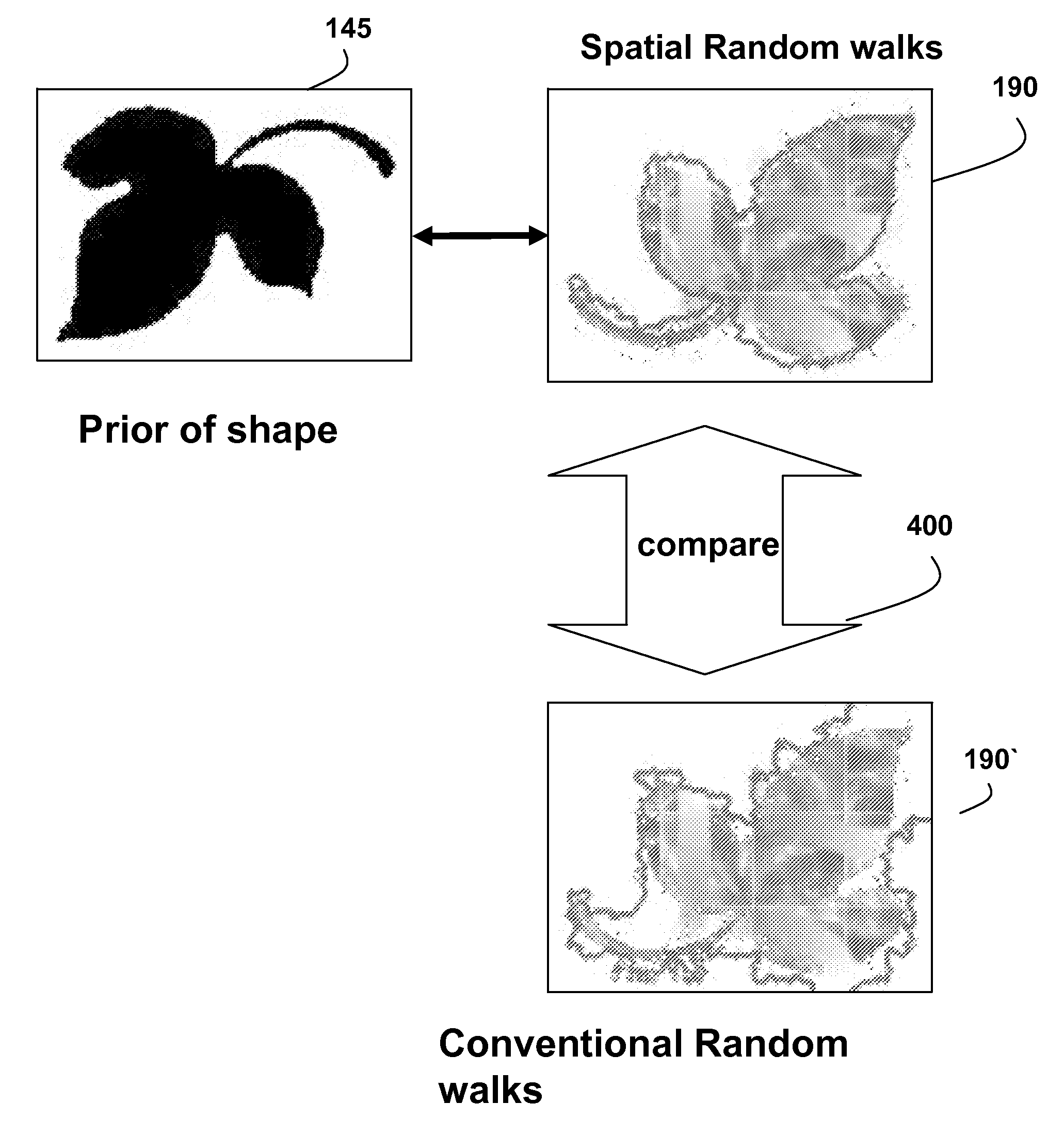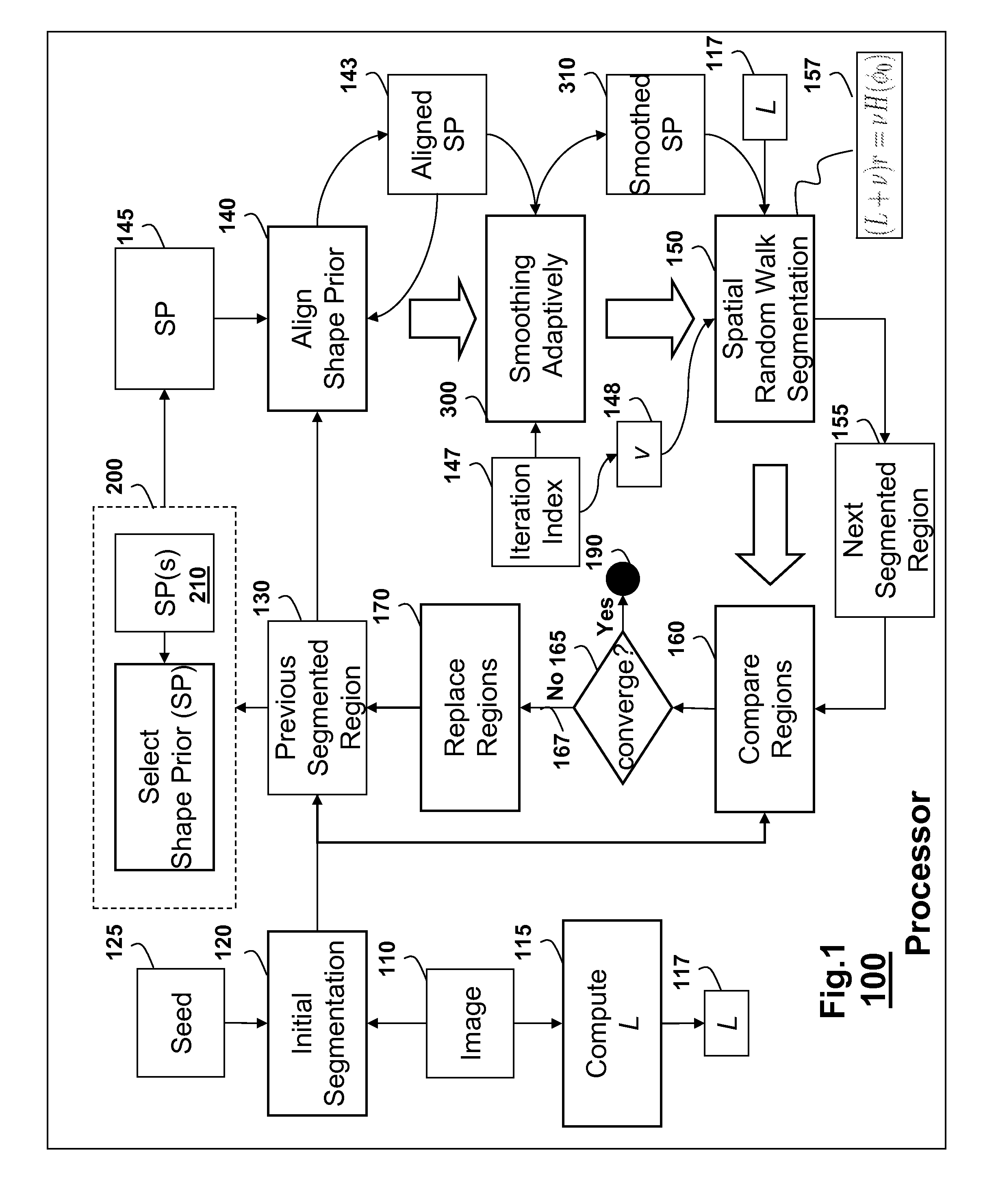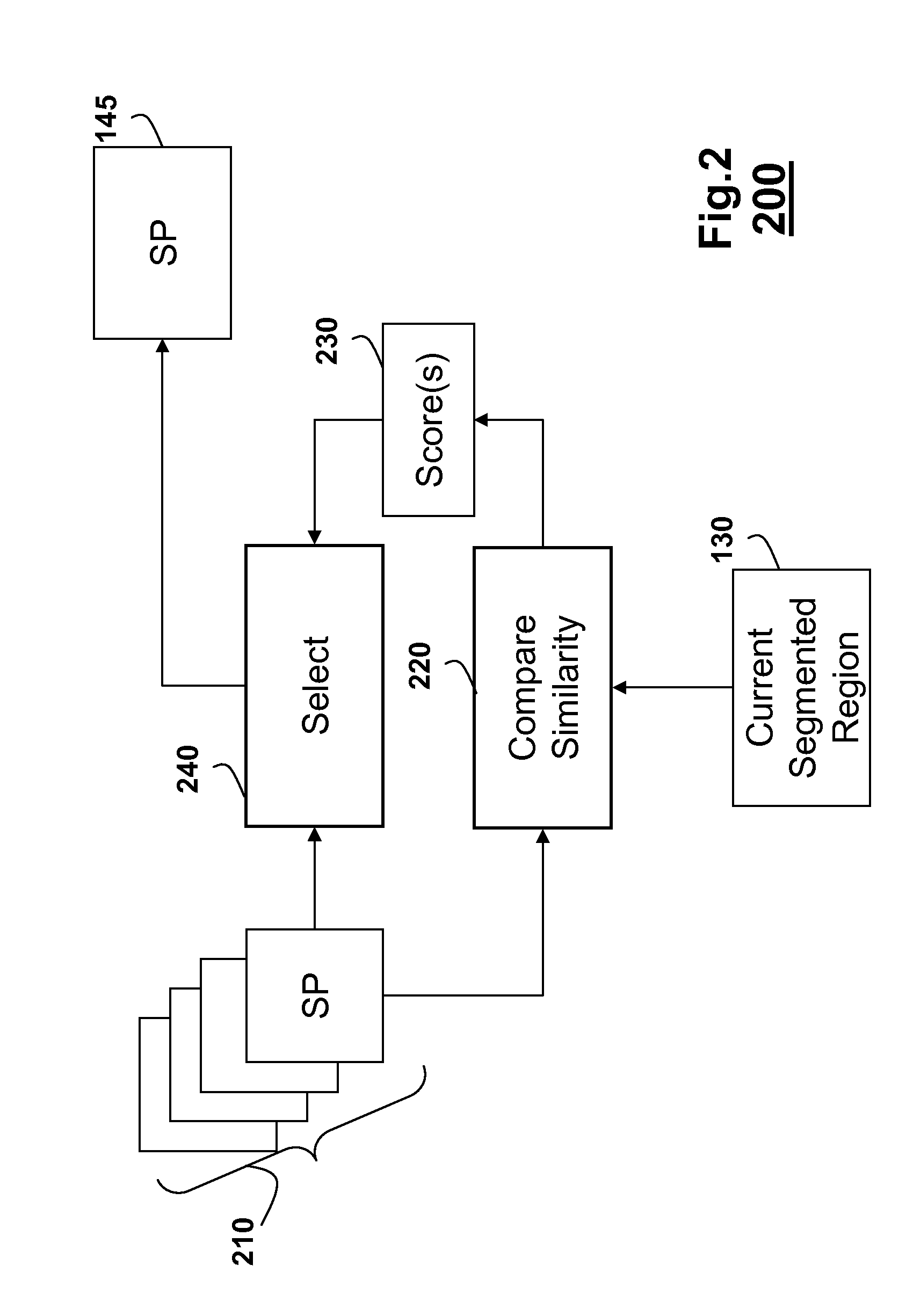Image Segmentation Using Spatial Random Walks
a random walk and image technology, applied in the field of computer vision, can solve the problems of not always producing satisfactory results for random walk segmentation, challenging automatic segmentation of objects in images, etc., and achieve the effect of superior segmentation results
- Summary
- Abstract
- Description
- Claims
- Application Information
AI Technical Summary
Benefits of technology
Problems solved by technology
Method used
Image
Examples
example embodiment
[0053]In one embodiment, we use of an image color intensity prior probability information in conjunction with the shape prior information. Therefore, our energy term takes the form:
=+ν+γ (13)
[0054]To model Ecolor, we use a normalized histogram from the Gaussian distribution kernels for foreground and background seeds. The pixelwise prior probabilities are simply obtained for each unlabeled pixel. Ecolor in Equation (13) leads to faster convergence then using the shape prior alone. Hence, the linear system according to this embodiment is:
(L+ν+γ)rsγλUs+νH(φ′0)−BTms, (14)
where s refers to label s, e.g., foreground or background. The weight parameter γ is selected empirically to accelerate convergence.
[0055]In the shape prior, the smoothing factor ε in H(·) is adjusted during each iteration based on the iteration index. As the segmentation converges to the given shape, the value ε approached to 1 to enforce shape matching. The weight parameter ν is selected empirically.
[0056]The weig...
PUM
 Login to View More
Login to View More Abstract
Description
Claims
Application Information
 Login to View More
Login to View More - R&D
- Intellectual Property
- Life Sciences
- Materials
- Tech Scout
- Unparalleled Data Quality
- Higher Quality Content
- 60% Fewer Hallucinations
Browse by: Latest US Patents, China's latest patents, Technical Efficacy Thesaurus, Application Domain, Technology Topic, Popular Technical Reports.
© 2025 PatSnap. All rights reserved.Legal|Privacy policy|Modern Slavery Act Transparency Statement|Sitemap|About US| Contact US: help@patsnap.com



